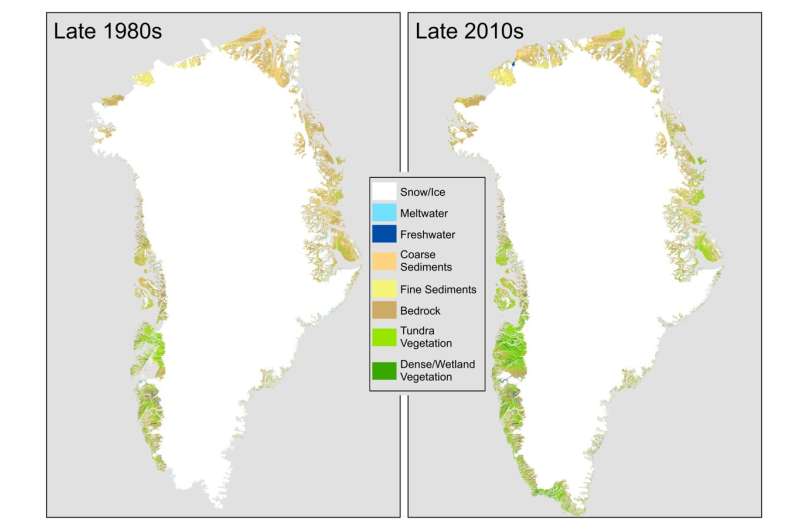
“We have seen signs that the loss of ice is triggering other reactions which will result in further loss of ice and further ‘greening’ of Greenland, where shrinking ice exposes bare rock that is then colonized by tundra and eventually shrub.”
So says Jonathan Carrivick, one of the authors of a new study released by Great Britain’s University of Leeds, where scientists have been tracking “the changes across Greenland from the 1980s through to the 2010s.” Their findings were published Tuesday in Scientific Reports and announced at the Science X website Phys.Org.
It is characteristic of environmentalists to depict Arctic ice melt as a harbinger of eco-doom, and the Phys.Org article does not alter from that politicized agenda. Retreating ice “is having an impact on the temperature of the land surface, greenhouse gas emissions and the stability of the landscape,” warn the authors.
Nevertheless, they include a positive caveat. Buried it in the middle of the piece, after a direful discussion on the “impact of global warming,” the following subhead reads: “Ice disappears to be replaced by bare rock and shrubs.”
That turns out to be an understatement. Here’s the good news:
Over the three decades, the amount of land with vegetation growing on it increased by 33,774 sq miles (87,475 sq km), more than doubling over the study period.
A pronounced increase in vegetation was seen across the south-west, east and north-east. The greatest increase in dense wetland vegetation occurred in the vicinity of Kangerlussuaq in the south-west and in isolated areas in the north-east.
Analysis by the researcher revealed that vegetation had increased along a latitudinal gradient between 63° north and 69° north and declined north of this.
Carrivick also noted that “water released from the melting ice is moving sediment and silt, and that eventually forms wetlands and fenlands.”
And how! The greening of Greenland is striking in this graphic provided by the University of Leeds.

Of course, these changes are portrayed as existential threats. The authors raise a myriad of objections: for example, the reflectiveness of snow and ice “helps to keep the Earth cooler,” so less of means a warming Earth. Permafrost thaw releases “greenhouse gases,” which they say contribute to global warming. The report’s lead author, Dr. Michael Grimes, even gave Phys.Org the ominous warning that the “expansion of vegetation, occurring in tandem with the retreat of glaciers and the ice sheet, is significantly altering the flow of sediments and nutrients into coastal waters.”
Despite the portentous statements of Leeds researchers, lessons from history are extremely reassuring. As The New American has reported many times, temperatures in Greenland were once considerably higher than those of present day. During the prosperous Medieval Warm Period (900 A.D.–1300 A.D.), “Greenland was fertile enough to produce impressive crops, and Vikings took advantage of the opportunity to settle there and strike up trade with Europe in agriculture, fishing, and the ivory market. They thrived until the Little Ice Age (1300–1850) chased them away.”
Is Greenland headed for another warming boon? Only time will tell. Meanwhile, hope springs eternal.





